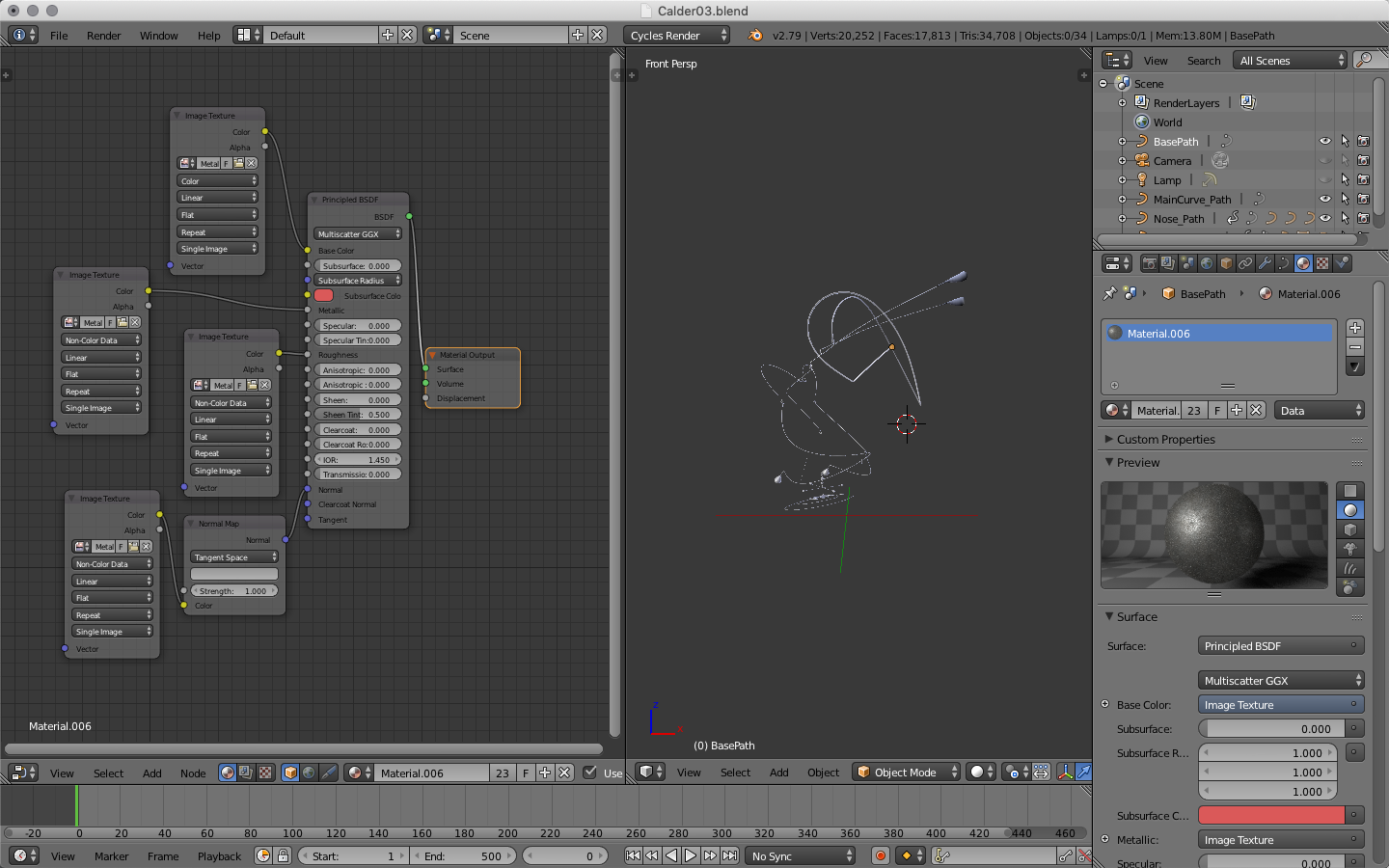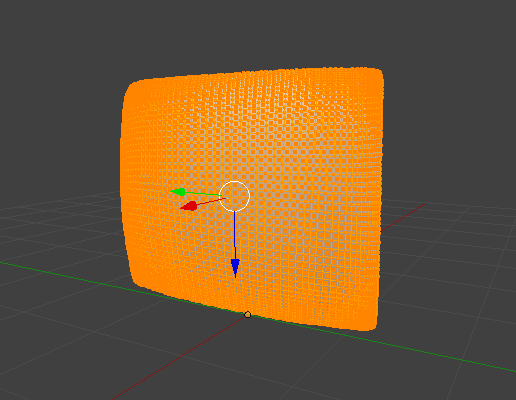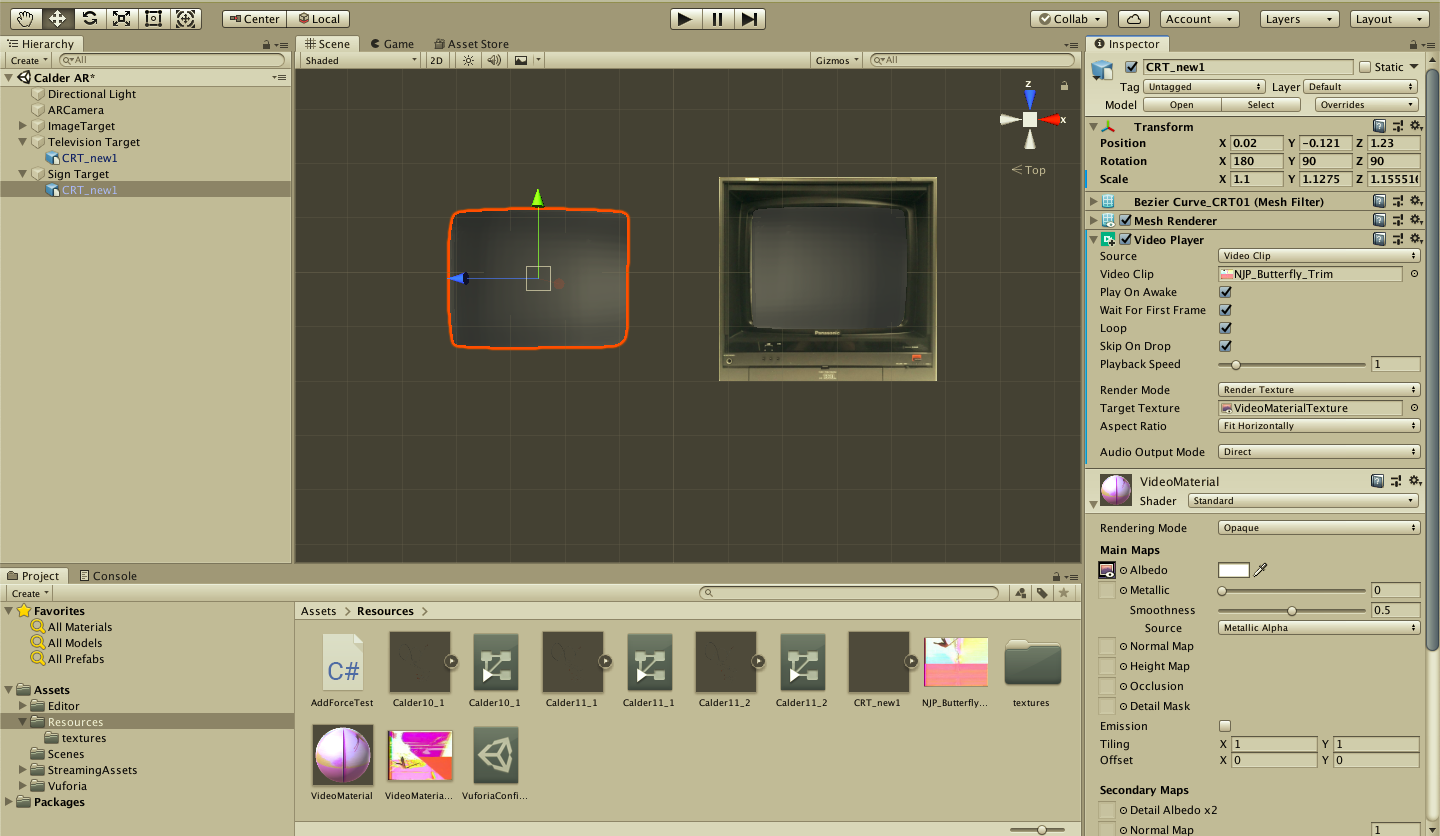The Potential of Augmented Reality as a Conservation Tool
This ongoing independent research project explores the potential of augmented reality as a tool to preserve the experience of time-based artworks no longer able to function in their original iteration owing to damage, obsolescence, or other barriers. Elements such as moving images or kinetic motion could exist as virtual visual layers integrated with the original object, or alongside it. Current workflow options and practical considerations for creating and preserving an AR project have been evaluated through learning 3D modeling processes and using the proprietary Unity software with Vuforia AR engine. Two case studies — a small wire mobile and a video presented on a CRT monitor — illustrate some of the challenges and successes of the technologies used through navigating the complexities of intertwined variables such as capture methodologies, building color and texture digitally, and integration between software systems.
This research has been approached in the context of museum studies and critique of imaging technologies, while maintaining a foundation in conservation values. Ethical concerns and issues of authenticity are addressed through research in conservation theory and comparative analysis of published accounts of conservation strategies involving questions of migration and reproduction. The benefits and drawbacks of presenting artworks with functions restored through a new technology are assessed in terms of artwork integrity, audience experience, and institutional transparency.
A summary of findings to date was presented at the 2019 AIC Annual Meeting for the Electronic Media Group, and a paper was published in Vol. 6 of the Electronic Media Review. The research was also presented to an international audience of experimental media professionals at the Vasulka Kitchen Brno (Czechia) colloquium, “Artworks from the Digital Era in Galleries and Museums” in 2019. An overview of this work was featured in The Institute of Fine Arts Annual 2019-2020 publication sharing the achievements of faculty and students. Continued work on variations of digital models and their implications will be included in a Bard Graduate Center Gallery exhibition in 2022, curated by Conservation Fellow, Soon Kai Poh.
Rendered composite image of 3D model
Rendered image of 3D model
Detail of 3D model construction in Blender software
Rendered details of 3D model
Screenshot of animation process using Adobe Premiere and Blender side by side
View of texture settings in Blender
Still of AR demo using Unity with Vuforia AR engine
Alternate configuration of mobile, rendered with Blender software
View of CRT screen 3D model in Blender software
View of CRT screen 3D model (left) and image target (right) with video textures (bottom) in Unity software
Still of CRT video AR demo using Unity with Vuforia AR engine
Tear sheet from "Artworks from the Digital Era in Galleries and Museums" colloquium in the Vasulka Kitchen Brno 2019 Year Book
Tear sheet from the Institute of Fine Arts Annual publication in 2020












